
Niall Grimes selects the lines that inspire and shape us as climbers—and as people—across the grades at the most-visited outcrops in the Peak District: Stanage Popular, Stanage North and Stanage Plantation. This article first appeared in an issue of On The Edge magazine in the 1990s.
I've seen Stanage in all seasons. I've been there early, or watched the sunset light up the smoke from the cement factory. I've had the head blown off me, or found it too hot to grip. I've seen bare trees bud and bloom, live rich then die back amongst orange trampled bracken. I've watched Stanage's landscape a hundred times, each time a different story. Through climbing, being in it, I know I can see nature more clearly, notice its little subtleties. Eskimos have about fifty words for snow. Only climbers have this many for holds and rock shapes and conditions.
Heaven Crack (VD)
Heaven Crack says 'Welcome to climbing.' It offers comfort, security, a gentle starting point to anyone who ever heeded their mother's warnings: 'Come back from the edge, William. Please.' You want to see just how far, how close you can go. You were scolded again when you came home and your new Clarks were scuffed, how many times do you have to be told? And just look at your trousers. You have to wear those to school tomorrow. But on your way to school you see Heaven Crack. What's that? What's this climbing, can I try? If there were ever a route to start on, it would be Heaven Crack.

Enthusiastically, it accepts bounding youths with their boundless yarding and softly invites the timid - those who would rather gently the rock embrace - showing them the way and forgiving them all their technique. The flake itself has the dimension and comfort of sofa cushions. The crack will learn you intuition. You reach down behind the cushions as if you were checking the sofa for dropped change, and find gold. I didn't know you could jam. I didn't know you could layback.
Climb this route playfully. Swap your back lanes and building sites and puddles for this rockstuff, and rejoice in the fact that you don't yet know it has any rules. Play tig on it if you like. And when you're finished, do it again. And for some reason, you're not quite sure why, you will do it again, because you've never done nothing like it before. And when you get home and mother says 'What did you learn today darling?' you will struggle again.
Twisting Crack (S 4a)
Right children. That's playtime over. Now for the history lesson and your High Neb field trip. High Neb was one of the popular areas when climbing started on Stanage in the last years of the 1800s and early 20th century. It was a gentlemen's and ladies' sport then, tweed coats and deer-stalkers were in fashion, as were cracks — and just like flares in the 'seventies, the wider the better.
Cracks are obviously the first thing you would try at any new cliff. They are good reference points. They are safe, secure in general. It's not hard to see why they jammed their gentlemanly Tricounis into them. Cracks and gullies were the job. I imagine the thought of climbing the Ulysses and Archangels of Stanage would have seemed so far away as to be an unnatural activity. No! I'll stick to my crack, thank you very much.
On High Neb, follow the pre-War explorations of the greats: HM Kelly, FC Aldous, Henry Bishop, WF Boyd, Miss Eckhard. Get stuck into Twisting Crack, Inaccessible Slab, Eckhard's Chimney, Norse Corner Climb, Tango Crack, Inaccessible Crack, or High Neb Buttress, the great venture out onto the bold faces from 1915. British Climbing - and grit in particular - is enriched by its history and it's good to visit these museums sometime. That will be all, class.
Christmas Crack (HS 4a)
You've made your mind up. You're leaving home, going to run away to sea. Get signed up, now set sail. People are all for talking about adventure in climbing. I've heard them and I know what they're talking about. Christmas Crack. Navigate up the restricted channel that forms the first half of this route first charted by Cap'n Bower in 1926. After a stormy squall at a steepening, you very soon arrive at calm waters. But the open seas lie ahead of you. So it's splice the mainbrace, avast behind and get yourself up 'n' onto that flake sonny.
The first time I did this route was on a stormy November Sunday and in a damp force eight, the exposure of pulling out into the layback was almost too much. Hanging off it, I thought about what it was like in the Hebrides, Malin, Pharoes. I couldn't help thinking of the early pioneers of exploration, thinking of Tillman navigating around the ice floes in the South Atlantic, leaning out from the rigging, hands gloveless in the sub-zero winds; a stoic, a hard man, a sea dog. I'm none of these, but in my own mild little way I made a little connection with his spirit of adventure.

For anyone who has had, like me, a traditional introduction to climbing, you'll remember the excitement in early days of simply being on rock. Before I did it myself, rock climbers equalled mountaineers on Mount Everest, which equalled people going to the North Pole or crossing deserts. For those of us who haven't got the financial or freedom-enabling opportunities of famous explorers, this little route fifteen minutes from smoke-nestling Sheffield, can democratically give us all a taste of adventure.
Symbiosis (HVS 4c)
There's this really strange route called Symbiosis. It's brilliant I think, but it gets no stars. My theory for this is that it is VS, but it doesn't fit the form of VS. It's totally unprotected, slabby thin climbing up a blunt arête. You see, the poor route thinks it's an E4. I don't mean it's undergraded, just that in its nature it's more like what a grit E4 is like. Holds are never perfectly placed and the camber of the smears always leaves the feet feeling never 100% on footholds. You must use all the rock available as purchase and move carefully. Swing from side to side of the arête. Undercut and sidepull. There's none of this juggy jamming laybacking crack I usually associate with Stanage VS. By the way, for the inverse of this phenomenon, go and do Indoor Fisherman at Froggatt. This is a stupendous E3 that is under the delusion that it's a great HVS and again, the patient is prescribed only one star. Where's the justice?
Flying Buttress Direct (E1 5b)
When all is said and done, when you've finished work, done with your lectures, can't take the city no more, just jump in your car or get the bus and make your way out to those wide moors. Put the grey-sided, grey-bottomed and -topped streets to your back, snatch an hour, an afternoon, or phone a sickie, because you want to get away from this 'real' life to a better and more colourful place. Sixty percent of the population of England live within an hour of the Peak. Some live a lot closer, some further away. But most of us have some wild and beautiful outdoor space we can reach: the Cromlech Boulders, the County, the Yorkshire Moors. When I leave the blue choking haze, the cars and a leadweight heart behind, I usually go to Stanage.
The world opens out there. See it stretch away from you. The little paint-by-numbers hills, the meandering b-roads with their oxbow car-parks. Houses, huts and homes, been there since way back when. Evening light-time is approaching and you said you'd be back for eight. Dump your sack and get your old boots on. Soloing allows the freedom to multiply; the freedom of just being here. Turn your eyes to the crag, run up the Flying Buttress slab. Chalk up well and swing committed out across the overhangs on just-good-enough jugs. Maybe it's great being here by yourself, maybe it's great that people are watching. Steady away to the top on brown-sugared handfuls. Nip over to Queersville. Its concave buttress always reminds me of a of a full-blown sail and I feel nature's breezes in the billows, giving me its energy much like it gives some great big clipper ship. From port to port, it's being outside for me. That gives me the momentum. Do Queersville then sit at the top and look out.
Quick. You've time for The Flange or Cave Arête if you hurry, then gallop back to the car. Driving back to the city, now, you're silenced. You've nothing more to say, and you're late. But still, you know that doesn't matter.
Cinturato (E2 5b)
So much of climbing is essence. Essence is the distilled-down element around which the climbing experience is created, like that tiny percentage of a perfume which is the actual scent, the distilled-down plant and flower essences, which is then added to various majority bases to make the actual perfume. The bases are just the vehicle for the scent. We know the whole as perfume, but it is the essence that remains with us. Often in climbing, it is the essence that is remembered — or rather, not so much remembered, as felt afterwards.
Cinturato climbs a tidy arête in a little hillside round from Tower Face and in a way is nothing special, bears only one star. It starts off climbing up the nice delicate slabby arête and soon you're at a ledge. It's a short route, so once you're stood on the ledge, the end of the climbing is only a move away. And just like so often in these situations, you know exactly what you have to do. Smear your right foot on the slab, hold the arête with your right hand, and stand up, get the top. That's all. Just stand up. With the comfort of the foot ledge, you can almost do it a few times and return, knowing somewhere that you weren't really going to do it. It was too off balance, too insecure. Your hand wasn't gripping. You almost feel silly as you know so well that you would flash much harder boulder problems. Right, that's it.
Then you've decided, then you're holding the jug, over. You try sometimes to remember exactly what happened, but all you have is a feeling. The body referred to its own library of movements and once you let it, it knew just what to do. The person is fully focussed on the action, what with the height and that, and that's why our recollections of cruxes are often sketchy. Cinturato's whole character, what you will remember of it, won't be the moves on the lower arête, or the size of the ledge. Its character will be the essence of what took place in that semi-conscious nanosecond of commitment — and how it made you feel.
Not to be Taken Away (f6C)
Not To Be Taken Away has always been there, as far as I know. I like that. It's got a permanence about it. Dependable. Solid. It will be there when you're climbing VS, and it will be there when you're climbing E5 and you can rely on that. A stupendous line up a stupendous face up a stupendous boulder. I've always found it hard to miss but easy to avoid. Just to look at it you know that you're going to have to insert a fair bit of effort, get pumped and gripped. Oh yes. I found that as I worked through the grades, I would go and try this from time to time. But you've tried it. You know what it's like trying to get off the floor. Bloody desperate. There's these, like, sidepulls, right? Slopey, not very positive. And you've absolutely nothing for your feet and the thing overbloodyhangs like that.
So you'd walk along, saying, well now I'm climbing this or that I'll have another go at Not To Be Taken Away, must be easier now. And is it? Is it shite! Most of the time my left foot leaves the deck, not through the pull from my arms, but just because I'm hopping with it. You know those little hops you do, getting bigger each time, hoping you will spring past the hard bit? Yeah, those. So you hop a bit, your right foot smearing on the rock, eventually becoming cramped, the chalk sweats off your hands, and you stand off again, walk away and await the arrival of your next power level.
Some day, however, you will do it. Tell yourself, I will do it, I will do it. You will do it. You will get past the first move, then fall off the second. Haha. But stick at it, kid, for the second is not quite as hard as the first. The guidebook describes Ulysses as the perfect route, as each move is harder than the last. I prefer the perfection of Not To Be Taken Away, where each move is easier than the last. You've done the first bit, now keep going, charrrrge. Good crimp up above there. No, with your right. Go again....ah, tough shit. You'll get it for sure next time. And you will, and it's mega when you do. This is one of the great boulder problems of the Peak, one you'd take to your desert island, although I don't know what the conditions are like in Tahiti. I'd also have Crescent Arête, the Green Traverse, West Side Story and ABFGK on Minus Ten. Once you've done NTBTA, you won't stop visiting the Grand Hotel and I reckon in years to come, I'll still be creaming myself heeling up that rampline. Long may it stay there.
Archangel (E3 5b)
Matthew, in chapter 14, tells the story of the disciples seeing Jesus walk on the lake: "Peter called to Him: 'Lord, if it is you, tell me to come to you over the water.' 'Come', said Jesus. Peter stepped down from the boat and walked over the water towards Jesus. But when he saw the strength of the gale he was seized with fear and, beginning to sink, he cried: 'Save me, Lord.' Jesus at once reached out, caught hold of him and said: 'Why did you hesitate? How little faith you have!" This bible story serves well as an illustration of what you need to climb Archangel. It will confound the Book of Numbers.
A man may well boulder 6C and redpoint 7c, but without faith, he is no more likely to succeed than the man who has bouldered 5C, for without faith, even a rich man is more likely to get into the Kingdom of God than to climb Archangel. And you must have faith, not in the hand of God, but in thyself. In the beginning, climbing would give me great fear and I would prey to Jesus to help me by. But then I changed and grew stronger and turned to myself. It wasn't until I placed faith in myself that I ever began to triumph. One parable tells of one of great strength losing faith before the top and, his forearms possessed with blood, was made to retreat using whole forearms to hold the arête. For thee, salvation lies in the faith in thine own ability and accept responsibility for thine upward salvation, or downwards alas to damnation.
High Flyer (E4 6a)
Getting more into climbing usually involves travelling in the end. That's the beauty of it, it's taking you to places you would never otherwise turn up in. These locations mostly are wild and beautiful, humbling one with nature's beauty. However, I also think often of the bizarre and obscure situations that climbing travel can deposit one in, for example:
A friend, one Andy P., hitching back from the Alps without a penny in his pocket, only his return ticket on the ferry, was picked up north of Paris on the Peripherique. When the driver caught on to Andy's financial situation, he, and I'm assuming it was a he, offered Andy a princely fiver in respect of services rendered, shall we say, below the seat belt. "Don't worry," my friend was assured. "Nothing moist."
Another, a mountaineer, one Paul X, whom I once met on his way to Germany on the strength of a grant from the Mount Everest Federation. I presume they were not fully aware of the purpose of the trip he reported to me: the selling for profit of a suitcase full of ladies' clothing he had acquired in a night club. "The Germans'll pay top scran for this," assured me the wily mountaineer.
I myself have suffered degradation at the hands of Scottish bullies, been subjected to obscene conundrums by car drivers, had my tent pole vaulted by Provençal winos. I've slept under the stairs of Berliner tenements, pitched my tent on motorway concrete and perceived myself hostage to a gang of Kathmandu street devils. I've been beaten up in the country and robbed in the city and I don't think any of these things would ever have happened had my desire to go climbing in foreign places not put me in such vulnerable positions.
Stanage End may not be South East Asia, but it's about as faraway as the Edge gets. Take yourself up there some quiet day and take your chances on High Flyer.
White Wand (E5 6a)
It goes something like this:
Right hand in finger pocket, left foot hook the arête. Left hand goes up to higher arête, thumb on pebble. Smear. Outside right through into shallow pocket level with right hand. Now at this point, you must bring the right hand across to the sharp arête, grasp it, and immediately get into a standing position on it. But just here, with your feet high, your back is almost parallel with the ground and the landing is aggressive to say the least. The smear supporting the right foot, and you, is poor and under a lot of force. Were it to give, you would in most likelihood fall about fifteen or twenty feet onto your back. This would suggest paralysis.
We ask a lot of climbing sometimes. To various degrees we ask it to give purpose to our leisure time, even our lives; to fill our wandering minds, to take us back fully when a boyfriend or girlfriend dumps us. We want it always to be there, expect it to be there. But climbing, in turn, can ask a lot of us — and never more obviously so than on a dangerous route. Of course, we can put our lives on the line metaphorically as well as physically. I have friends who have devoted themselves to climbing, to the detriment of a career, education, relationships and standing in society in general. Whether this represents a strength in their personality or a weakness, I don't know. Many of them now appear slightly at odds with the real world, but none seem to have any regrets and anyway, everybody knows there's no such thing as 'the real world.'
To my knowledge, White Wand is maybe the best route on Stanage and for some reason seems worth the risk. I don't know why. Why do we go through the Green Door, as Simon calls it. (Through the Green Door: Commiting oneself to an act, especially in climbing, involving danger and inescapeability and sometimes pump. You can't come back through the Green Door.) The enshrinement of danger is probably cultural and is highly valued in Britain and Ireland, my friend Eddie never seeming happy unless he's shaking even more, ever higher above worse and worse R.P.s each time he goes out. Most other countries, however, seem to have bolted the Green Door shut as far as rock climbing goes.
Now, once you're in position on the arête, you can get stood on the pebble. With the arête here being much sharper than, say, Archangel's, composure can be got back. Just keep your head and nervously squeeze the blood out of the arête as you layback to a ledge. Continue easily to the top now on a path to glory, buzzing to the stars, knowing you're the greatest fucking human being that ever lived. There. That's why you do it.
Ulysses' Bow (E6 6b)
It's all the same, you know. They're all connected: myth, inspiration, magic, bullshit. All in the same family. Climbing is full of it, and it seems that gritstone attracts more than its fair share of the above. That's part of its magic, I think. It's also a fault. Grit routes, they have their little secrets, little bottom drawers. Their aura gives a spice, without which they would be bland. I always find myself showing them a lot of respect, deference and sometimes after doing them I'm left wondering what it was all about.
One thing it is all about is the whispers and ooohs you hear, which have you trembling at the mention of some of their names. I'm always awaiting the visit of some foreigner who hasn't been taught to be afraid of them to come along and walk up all the hardest routes and turn round and wonder what all the fuss was about. But it hasn't happened yet, as far as I know.... only once. A story has it that an Eastern European came along one time and soloed Ulysses onsight. It was only the second time that that had ever happened. They had mistaken Ulysses for Archangel. My God. Didn't he suspect anything? Maybe the fact is that the intimidation factor has to be taken into account in the grade. Its aura is almost tangible, a physical barrier. Now maybe I'm bullshitting here.
And while the mystery surrounding a route could be seen as a bad thing in the way that it might intimidate you from trying it, I think it can also be seen as a great magic. You sometimes hear stories: so-and-so failed on that, your man had a lucky escape, thingamy did it in EBs, wow. Routes gather histories and great character. Like climbing heroes. You read and hear stories online and in the pub, usually about extreme incidents they have been actors in. Amazing stories and legends. I used to read all about them, crane for more and want to be like them and to live a life as exciting as theirs. Not this petty little one of mine. I would sometimes buy clothes like those I saw them wear, and use their phrases. (But let he who has never been sad cast the first stone. Ow! Ouch! Eee!) Sometimes in Pete's Eats I'd recognise them and couldn't wait to tell someone. What they were were personae and personalities, not people. I only knew their aura and rumours surrounding them.
I always wanted to get to know these figures and over the years I have got to know some of them. I remember one winter standing in Llanberis High Street in the rain and talking to one of these heroes. His shoes were dirty with clay and leaking and he seemed to be seeking my company as much as I was seeking his. I found this strange and I felt a little sad and disturbed for he was no longer a hero. He was real now, a person, no longer just a photo of someone on a hard route. While I had gained one of the world's most precious things, friendship, I felt a twinge of sadness at losing that image I had of these people whose climbing and lives were a constant frenzy of extremes.
What's Ulysses like? Is it really as hard as it looks when you stand at the bottom as it draws your eye up and you try to make out any holds, shuddering at the thought of being there yourself. What's it like, you don't see people on it, do you? You could throw a rope down it and find out, like most ascensionists have done. Or you could just sit and look, thinking that sometimes a little magical fancy in the back of your mind is better than a tick in your guidebook. It would be nice to do it. It would be nice too to never do it.
- ARTICLE: My Map of the World 11 Jul, 2024
- ARTICLE: The Edge of Time 14 Feb, 2024
- GEAR NEWS: Boulder Britain 2020: Bigger, Better, BOULDER! 20 Oct, 2020
- PODCAST: Jam Crack Podcast 6 Dec, 2016
- The Pitter-Potter of Giant Feet: 'Meeting' Dean Potter 20 May, 2015
- REVIEW: Roca Verde Climbing Guide 28 Jul, 2014
- Coming Home for Christmas 24 Dec, 2011
- A New Guidebook: Boulder Britain 22 Nov, 2011
- King Of The Crag 10 Sep, 2011
- Psychovertical by Andy Kirkpatrick 15 Jan, 2009
Guidebook

Eastern Grit
The new edition of the country’s best-selling guidebook has taken crag coverage to a new level. Using better cameras, drone photography and better technique at processing the images we have created by far the best set of crag shots ever assembled for the eastern gritstone edges of the Peak District. This includes superb overview photos plus brilliant buttress photos of crags like Black Rocks, Cratcliffe, Curbar and Wharncliffe which have previously been much harder to photograph.
More info
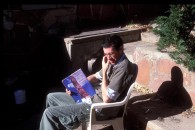








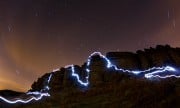

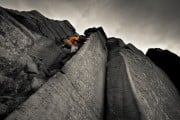


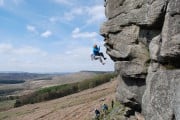
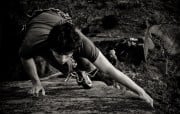
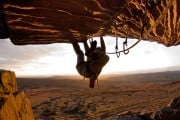










Comments
This is great Niall, thank you.
And I'm definitely seconding the advice to get to Stanage End and try High Flyer.
Just to be clear, it was five francs, not five quid.
Brilliantly developed themes for each of the grades, great writing again Niall.
Fantastic piece of writing. That is all.
Nobody gets across in writing how deeply in love they are with climbing better than Grimer